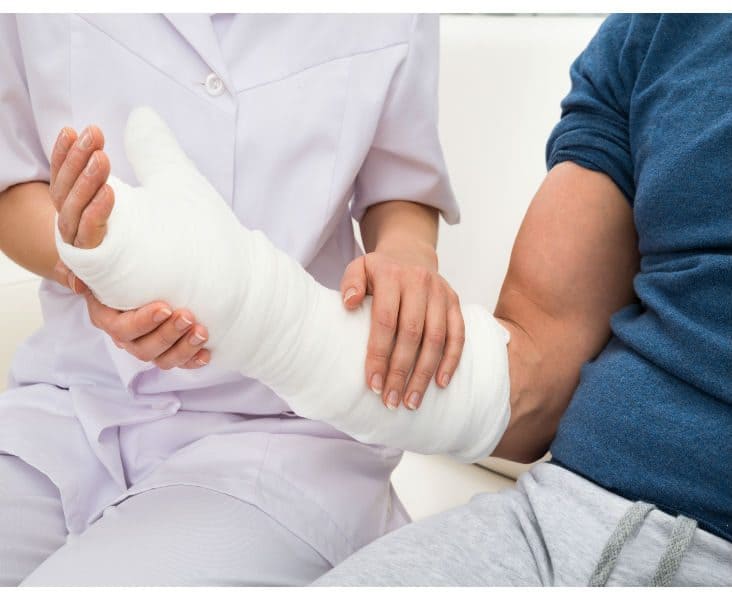If you’ve been diagnosed with a fracture, you may have been recommended several treatment options, such as a casting, surgery, physical therapy, and medications. Below is information regarding each of those treatment options.
Cast
Because a fracture is a break in the bone, healing of a fracture requires that the bone fuses together until the fracture is completely gone. In order for the bone to fuse, it must be kept in place without movement to ensure proper healing. A plaster cast is worn around the area of fracture to ensure that the bone does not move.
Open Reduction/Internal Fixation
Also known as ORIF, open reduction/internal fixation is a procedure in which bones are pinned together and held in place by plates and/or screws under the skin. This option is often used for more serious fractures that are unlikely to heal properly without additional fixation or support. The plates and screws hold the bones in place and allow the facture to heal.
External Fixation
An external fixation is a procedure in which a device that is worn outside the skin is connected to surgical pins or screws that are holding the fracture in place.
Medication
If a doctor is recommending medication after a fracture, it is most likely pain medication. The medications are to be taken as a complement to a larger treatment plan. For example, many patients with fractures take medication along with physical therapy.
If, however, the fracture is “open,” and therefore prone to infection, you will be recommended antibiotics.
Physical Therapy
Physical therapy is commonly recommended for patients who are healing from fractures. Since a fracture is often restrictive of range of motion, a physical therapist will work with and teach you the proper exercises to regain strength in the muscles surrounding the fracture.
For more information on treatment options for fractures, contact the Orangewood Surgical Center today. Call (714) 221-4236.

